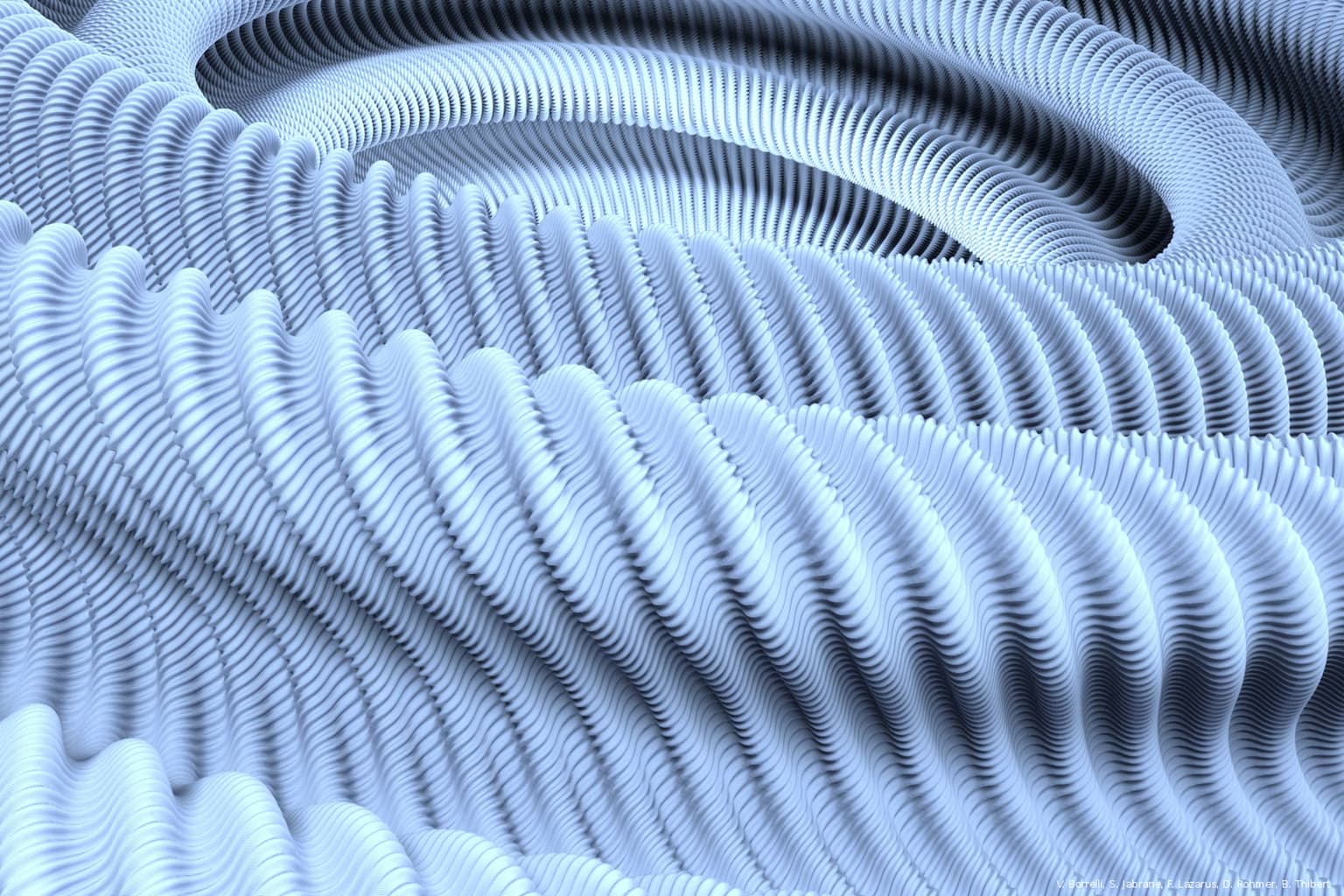2019 Icerm Illustrating Mathematics
Vincent Borrelli, Roland Denis, Francis Lazarus, Boris Thibert and Damien Rohmer
Artists
Vincent Borrelli, Roland Denis, Francis Lazarus, Boris Thibert and Damien Rohmer
Researcher in Computer Science
CNRS, Grenoble
Grenoble, France
Statement
It follows from a simple curvature obstruction that a flat torus cannot be isometrically embedded in Euclidean 3-space. From the same obstruction, neither can a sphere be isometrically reduced to fit in the interior of a ball of smaller radius. However, sixty years ago, John Nash and Nicolas Kuiper demonstrated the existence of such isometric embedding or reduction if we just require the isometric maps to be C1. Misha Gromov later developed the Convex Integration theory as a powerful tool to construct such maps. Nonetheless, until a few years ago no one had been able to visualize those paradoxical surfaces. Here, we present images and 3D printings of the Hevea Project computed thanks to the convex integration theory of Gromov.
Artworks

